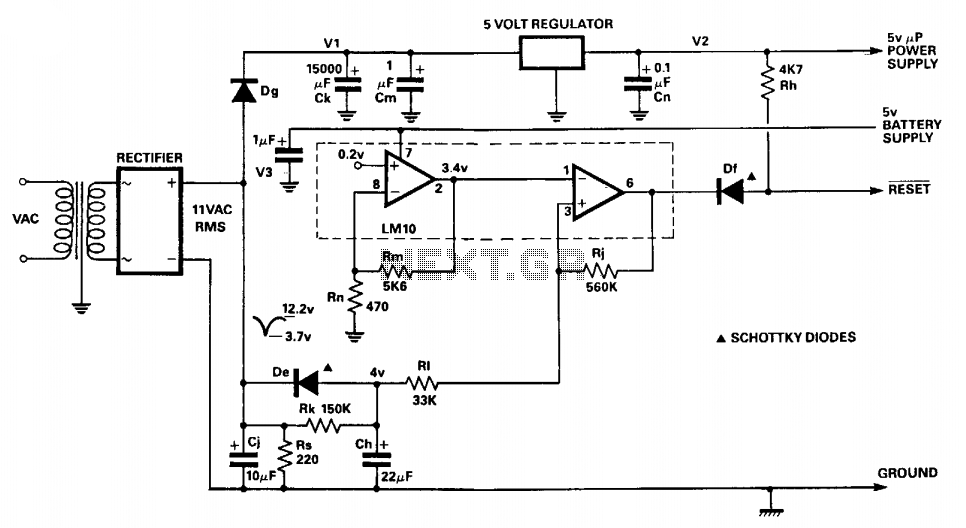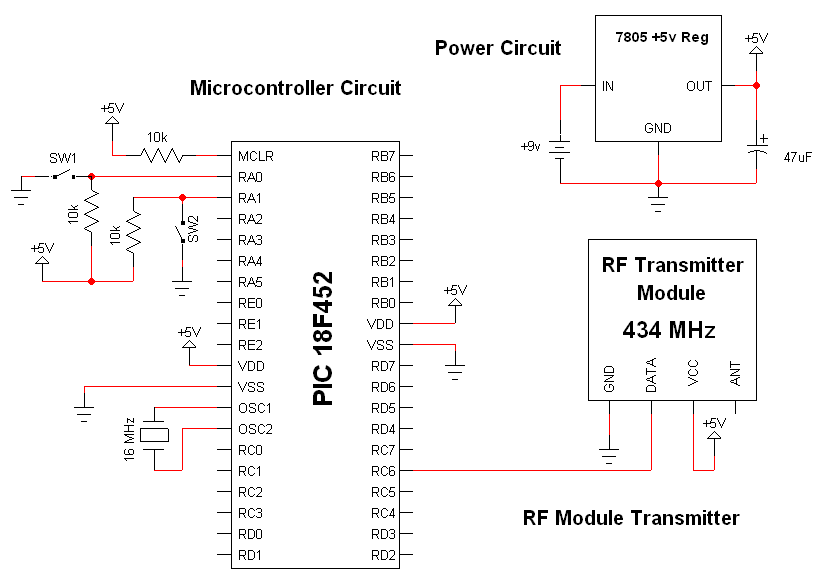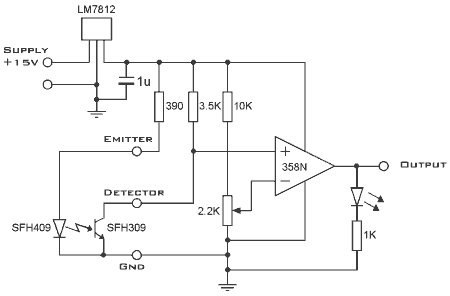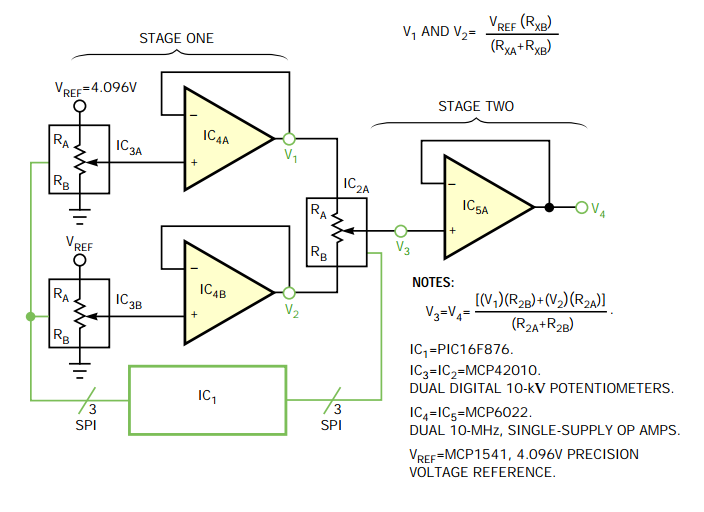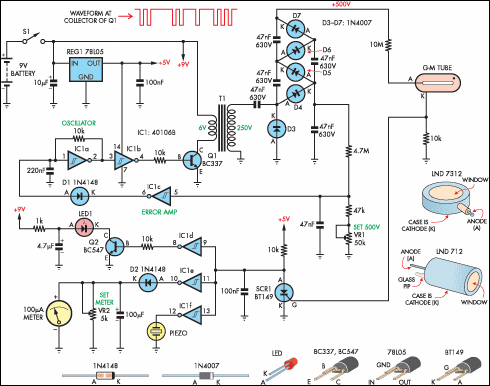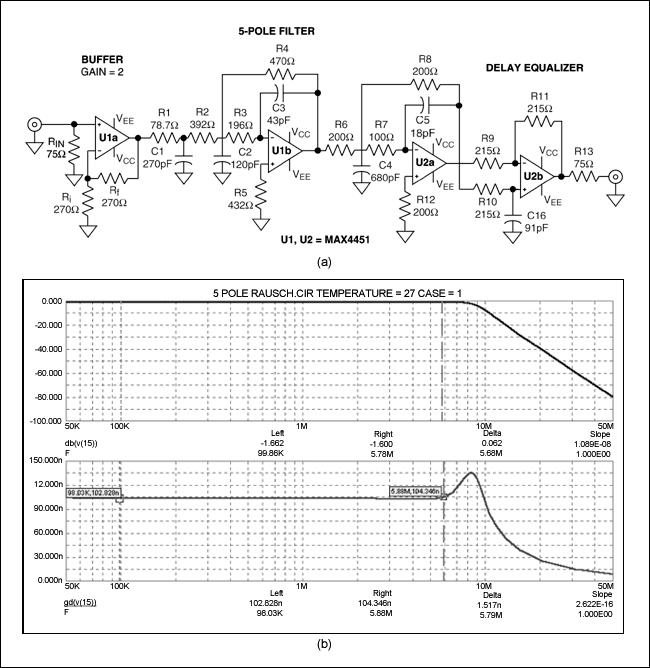
Tablet Reminder Uses Watch Module
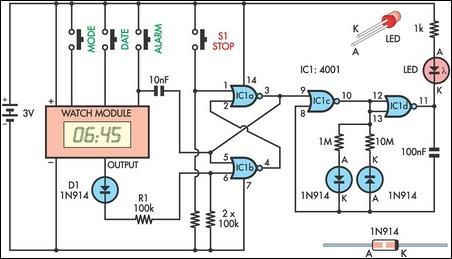
This device serves as a daily medication reminder. It incorporates a crystal watch and a 4001 quad 2-input NOR gate, with two of the gates (IC1a & IC1b) configured as an RS flip-flop. The watch is programmed to alert at tablet time, typically in the mornings, when an alarm is triggered by a high signal through diode D1, which sets the RS flip-flop. This action activates the oscillator formed by gates IC1c and IC1d, which in turn drives an LED with a 10% duty cycle. A 10nF capacitor resets the watch alarm when a positive voltage is detected on pin 3 of IC1. The circuit operates at a low current consumption of only 50 µA using a 3V battery.
The medication reminder device is designed to provide an effective solution for individuals needing assistance in adhering to their medication schedules. The core of the system is a crystal watch, which ensures accurate timekeeping, while the 4001 quad 2-input NOR gate serves as the primary logic component. The RS flip-flop configuration, utilizing gates IC1a and IC1b, allows for a stable state to be maintained until the alarm is triggered.
When the set time for medication arrives, a high signal is generated through diode D1, leading to the setting of the RS flip-flop. This mechanism ensures that the alarm can be activated reliably at the designated time. The oscillator, constructed with gates IC1c and IC1d, functions to produce a periodic output that drives an LED indicator. The choice of a 10% duty cycle for the LED ensures that it flashes at intervals that are noticeable yet conserves battery power.
The inclusion of a 10nF capacitor plays a crucial role in the reset function of the watch alarm. When a positive voltage is detected on pin 3 of IC1, the capacitor discharges, effectively resetting the alarm and preparing the system for the next cycle. This design element contributes to the overall reliability of the device.
Operating at a mere 50 µA with a 3V battery, the circuit is highly efficient, allowing for extended use without frequent battery replacements. This low power consumption is particularly advantageous for a device intended for daily use, ensuring that users can rely on its functionality without the inconvenience of constant charging or battery changes. The combination of these elements creates a user-friendly and effective medication reminder system.This device is used as a reminder to take medicine every day. This device actually contains a crystal watch and a 4001 quad 2-input NOR gate with two of the gates (IC1a & IC1b) wired as an RS flipflop. The watch is set to tablet time , usually mornings, when an alarm is activated with a high signal fed via diode D1 which sets the RS flipflop and
enables the oscillator comprising gates IC1c & IC1d. This drives the LED with a 10% duty cycle. The 10nF capacitor resets the watch alarm when positive voltage appears on pin 3 of IC1. The circuit consumes only 50 µA with a 3V battery. 🔗 External reference
The medication reminder device is designed to provide an effective solution for individuals needing assistance in adhering to their medication schedules. The core of the system is a crystal watch, which ensures accurate timekeeping, while the 4001 quad 2-input NOR gate serves as the primary logic component. The RS flip-flop configuration, utilizing gates IC1a and IC1b, allows for a stable state to be maintained until the alarm is triggered.
When the set time for medication arrives, a high signal is generated through diode D1, leading to the setting of the RS flip-flop. This mechanism ensures that the alarm can be activated reliably at the designated time. The oscillator, constructed with gates IC1c and IC1d, functions to produce a periodic output that drives an LED indicator. The choice of a 10% duty cycle for the LED ensures that it flashes at intervals that are noticeable yet conserves battery power.
The inclusion of a 10nF capacitor plays a crucial role in the reset function of the watch alarm. When a positive voltage is detected on pin 3 of IC1, the capacitor discharges, effectively resetting the alarm and preparing the system for the next cycle. This design element contributes to the overall reliability of the device.
Operating at a mere 50 µA with a 3V battery, the circuit is highly efficient, allowing for extended use without frequent battery replacements. This low power consumption is particularly advantageous for a device intended for daily use, ensuring that users can rely on its functionality without the inconvenience of constant charging or battery changes. The combination of these elements creates a user-friendly and effective medication reminder system.This device is used as a reminder to take medicine every day. This device actually contains a crystal watch and a 4001 quad 2-input NOR gate with two of the gates (IC1a & IC1b) wired as an RS flipflop. The watch is set to tablet time , usually mornings, when an alarm is activated with a high signal fed via diode D1 which sets the RS flipflop and
enables the oscillator comprising gates IC1c & IC1d. This drives the LED with a 10% duty cycle. The 10nF capacitor resets the watch alarm when positive voltage appears on pin 3 of IC1. The circuit consumes only 50 µA with a 3V battery. 🔗 External reference
